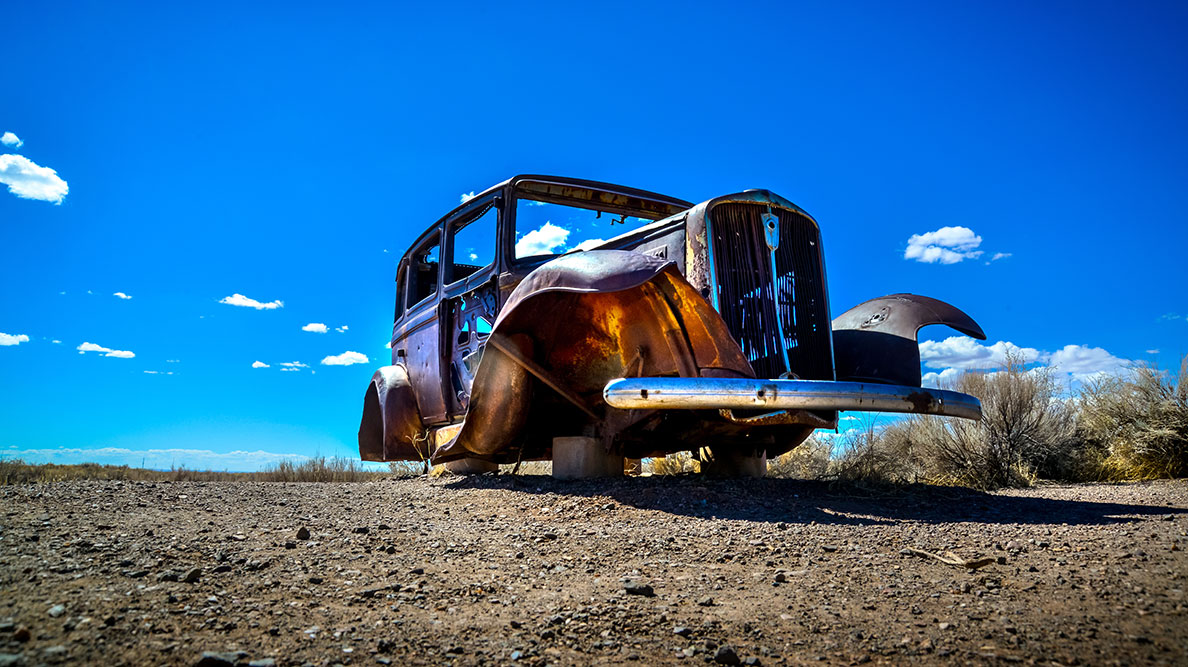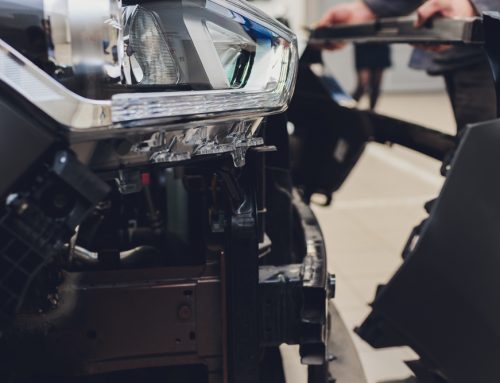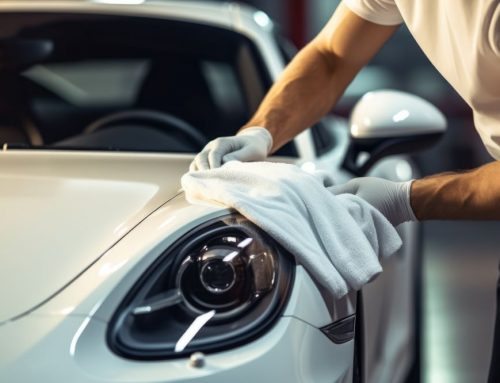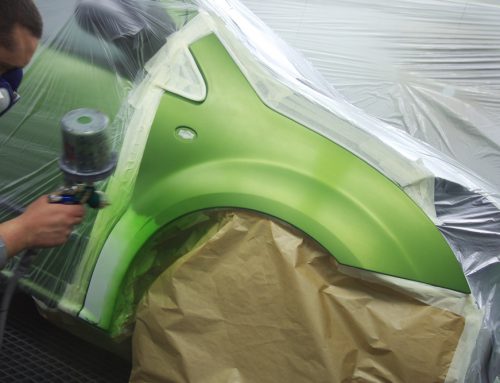This has become a daily situation; there is one coveted part left at the dealership and three body shops buy it at the same time. Only one of them will get it, creating mayhem for the other two. Next arrival: days, months? These days, anything is possible.
We expect the auto parts shortage to last from several months to a year or more. So, it’s better to prepare accordingly.
To address this issue, in addition to my usual collaborator, Charles Aubry, I was fortunate to work with Stéphane Tremblay, co-owner of ProColor Armand-Paris and Patrick Piché, body shop management consultant at Akzonobel. I would like to thank them for their time, but especially for their passion.
A New Kind of Bottleneck
The classic bottleneck in a body shop was at the paint boot. Today, it has shifted to part reception, with parts trickling in.
Even body shops that had become masters at managing their paint booths are struggling to apply their best practices. It’s harder to plan efficient paint batches and make optimal use of painters.
Shops that were struggling early in the repair process are suffering even more now.
Parts shortage isn’t only a bottleneck for your productivity but also for your cash flow and profitability.
Direct Impact on Body Shops’ Pockets
We have seen highly productive shops, used to ordering parts just-in-time, suffer significant margin and cash flow declines and struggle to maintain extensive part inventories.
At some body shops, we’ve seen loads of cars waiting to be repaired and where the shops support customers with all their loaner cars and a big car rental bill. This is the case at Armand-Paris.
Stéphane Tremblay describes the situation: “Here, I had to add two non-productive staff to manage parts and all the ‘gesticulation’ that this entails between the team, the customer, the insurer and the parts suppliers.
I have an astronomical number of parts waiting to be installed on vehicles that won’t be repaired for a long time (I have no choice but to buy them now or they may be unavailable later). I have 80 courtesy cars on the road plus another 80 loaner cars. It’s crazy. What’s saved us so far is our efficient structure, but our margin is greatly impacted. Simply put, we’re working much harder for much less money.
The numbers speak for themselves; before the pandemic, we could repair an average of 75 to 85 cars per week. We once repaired 102 cars in one week! Today, things are good if we repair 50 cars in a week. My costs for this number of repairs have exploded. Unfortunately, I know it will take a long time to break even.”
We’re Not Out of the Woods Yet
The scenario is even bleaker for shops that were performing poorly or moderately before the current parts shortage, which unfortunately comes just after the first lean years that came with the pandemic.
With its back to the wall, the body shop world is waiting for the storm to pass. But wait too long and you risk the worst, with no possible way back. Many players could be missing once the crisis is over.
Stéphane Tremblay predicts that the worst is yet to come: “For now, our repairs are paid for in advance by most insurers. We buy the parts and do our best to serve the customers and find temporary solutions to respect the rental fees granted by their insurance policy. We do partial but safe repairs and make sure to get as many cars back on the road as possible.
But, in a few months, all these vehicles will be back, and we will have to lend courtesy cars, rewash the vehicles for free and finish the temporary repairs we started months ago.
Brakes and batteries will also need to be changed on undrivable vehicles that haven’t moved for so long. We’ll have no choice but to do this to return the vehicles to customers.
Our capacity will be challenged if we’re unlucky because everything will obviously happen at once. With what money will we do this? Our own.”
Some Solutions to Reach the Light at the End of the Tunnel
If Armand-Paris is struggling to cope with the crisis, we can imagine that many other workshops are burning the candle at both ends.
Each of the three pillars of the industry (Patrick, Stéphane, and Charles) offers us a solution to keep our head above the water.
Patrick Piché: “When you look at the crisis, it is easy to see the body shop as a victim because it has very little control over the situation. But it still has some and it can pay off a lot under the current situation.
In normal circumstances, and even more importantly now, is it said that to optimize the shop’s performance, vehicles must be dismantled as soon as they are estimated.
Forty-three percent of supplement requests are for missing parts that suddenly appear on the estimate during the repair. This is unacceptable.
Supplements are supposed to be the exception, 43% is routine. A bad estimate can cost you many dollars and parts shortage headaches.
The shops have the right to dismantle vehicles when estimating damage and do the estimates right.” *
Stéphane Tremblay: “I believe part of the solution lies with the insurance industry, but they are big machines. By the time they adapt to help with new processes, the crisis may be over.
Meanwhile, what can I do? I can make sure to return as many vehicles on the road as possible. That is what I can control. We need to find ways (with the customer) to return their car to them quickly and safely even if the repair is not complete. We need to get things moving. This way, parts are installed, cars are circulated, and the financial impact of renting and loaning courtesy vehicles is less. It puts a ‘Band-Aid’ on the wound until it heals.”
Charles Aubry: “Two things. First, creativity is what will save the day for many body shops. Not only the body shops’ creativity, but also that of insurers and customers. We must rethink our routine to serve the maximum of clients and keep them happy. Sad to say but customers, for their part, must be a bit more understanding and open-minded. I think it is important to educate them as soon as we have our first good contact with them. Try to direct their expectations.
We have already seen some good moves all around. For example, insurers compensating their insured clients for new parts when they’ve purchased aftermarket or recycled parts to deliver the car faster. Or customers who accept to have aftermarket or recycled parts with only the primer on while waiting for a new part.
This shows the partners’ willingness to cooperate to make the magic happen. On the other hand, even if you have the best customers and partners, you must stay alert.
Secondly, we need to protect our cash flow so that we don’t find ourselves in trouble in five or six months because we used up all the money for several unfinished repairs, which will prevent new money from coming in because we’ll be busy finishing old work. We must keep in mind that government grants to support businesses during COVID will be a thing of the past. We probably won’t be able to rely on the state to support us as we did at the beginning of the pandemic.
If you’re lucky enough to have your accountant to help you plan, it might be a good way to get a handle on things.”
*In another article, I continue the conversation with Patrick Piché.
If you are interested in the subject, you can read more here: Missing Parts, Lost Repairs
Author: Alexandre Rocheleau
Collaborators: Charles Aubry, Patrick Piché, Stéphane Tremblay
Translation: Sophie Larocque
Editing: Émilie Blanchette





